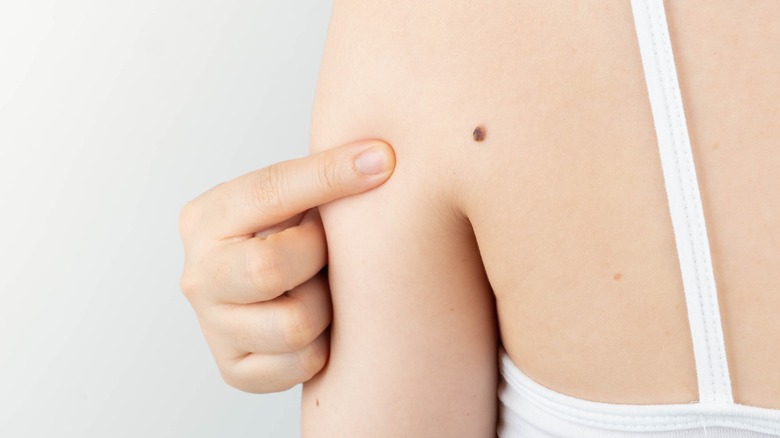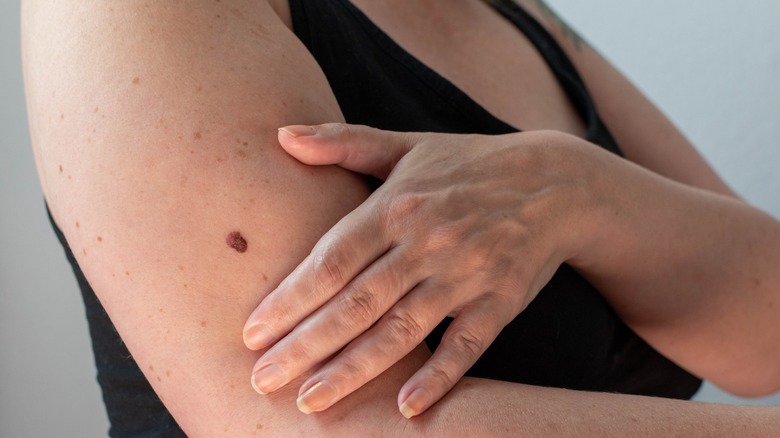Is A Scab On A Mole Cause For Concern?
Moles are a fairly common skin lesion that can crop up anywhere on the skin (via WebMD). They occur when skin cells, called melanocytes, grow together in a cluster instead of being spread evenly throughout the skin. Most of the time, moles are not dangerous. However, there is the risk that certain moles could turn into skin cancer.
According to the Mayo Clinic, skin cancer occurs when skin cells grow abnormally. It typically develops on parts of the skin that have been exposed to sunlight but can also appear on areas of the body that don't ordinarily get sun. Skin cancers can appear as a growth on the skin that may have the appearance of a mole (via Johns Hopkins Medicine). These moles can have an irregular shape, change in color or size, or even have a scab or crusty covering. So, when performing a skin check, when should you start sounding the alarm bells?
Spotting a scab isn't immediately a sign of trouble
A scab that forms on a mole is not necessarily cause for concern at the outset (via Healthline). It could be as simple as you having bumped or scraped the area without even knowing it. However, it could also be a red flag for melanoma, or skin cancer. Cancerous moles can scab over as a result of changes in the structure of healthy cells, causing them to react differently, including forming a scab-like covering. If you have a scabby-looking mole, it doesn't have to mean that you have melanoma, but if you can't trace it back to a specific injury or cause, you should have it checked out.
When looking for skin cancer, one of the first things to check for is changes in the size, shape, and color of a mole (via the Skin Cancer Foundation). If you notice any asymmetry, uneven borders, or multiple colors of brown, tan, or black, you should contact your dermatologist immediately. In addition, "ugly ducklings," moles that stand out from other moles or lesions on your body, are cause for concern and should be addressed immediately.
Catching skin cancer early makes all the difference
Having a mole with a scab or a crust-like covering is not an immediate indicator of skin cancer, but when in doubt, check it out. Early detection is the most important thing when it comes to successfully catching skin cancer (via the Skin Cancer Foundation). You should perform self-exams monthly, and also make sure you schedule a yearly skin exam with your dermatologist.
According to the Mayo Clinic, people who have a lot of moles, or abnormal moles, known as dysplastic nevi, are at an increased risk for developing skin cancer. If you have a history of developing abnormal-looking moles, it's important to keep a close eye on them and watch for any changes. If you spot any irregularities, make sure you see your doctor or dermatologist right away.
Depending on your level of risk, your doctor also may want to schedule more regular visits (via Healthline). If you have a history of skin cancer in the family, for example, your dermatologist may recommend checkups every six months as opposed to annually. And, if you have a previous history with melanoma, those visits may occur every three months. Keep a close eye on your moles and report any changes immediately. Early detection will give you the greatest chance for successful treatment.



